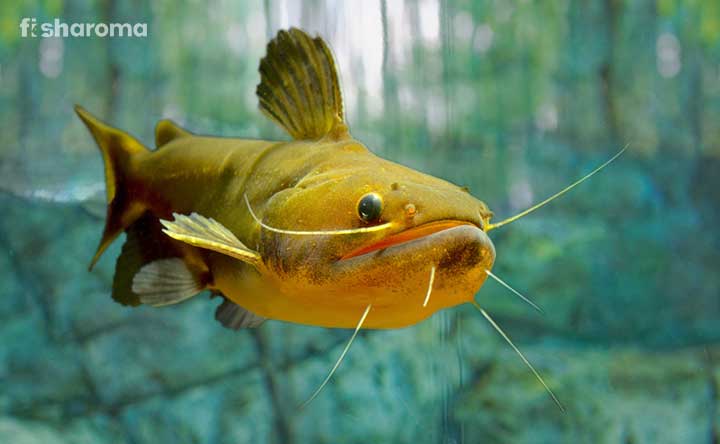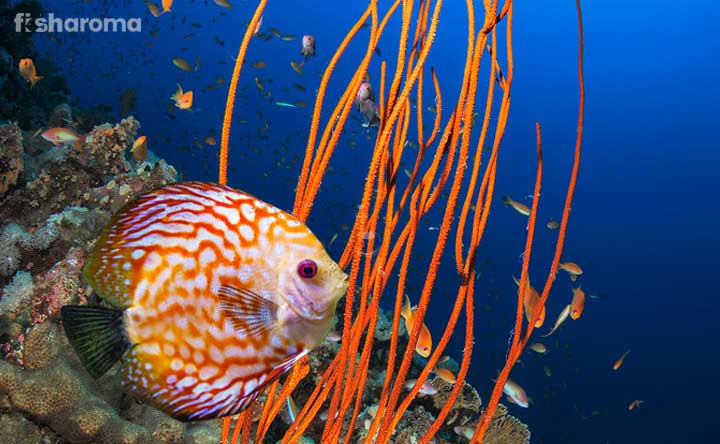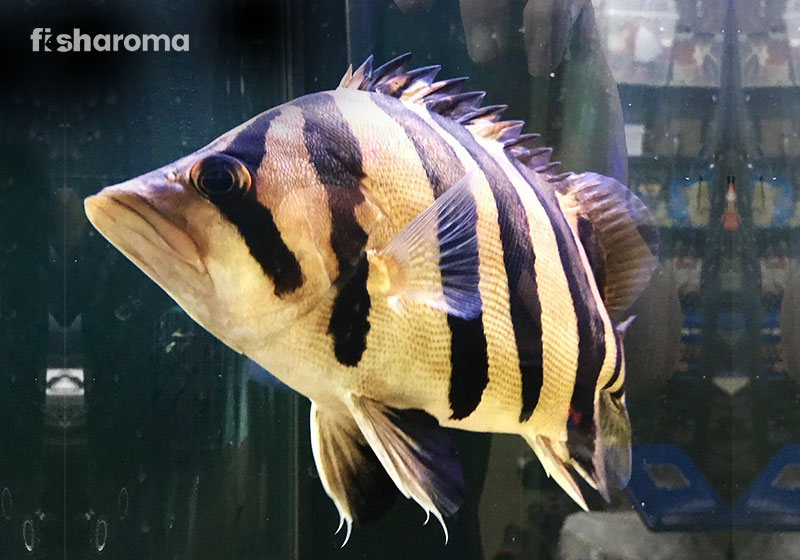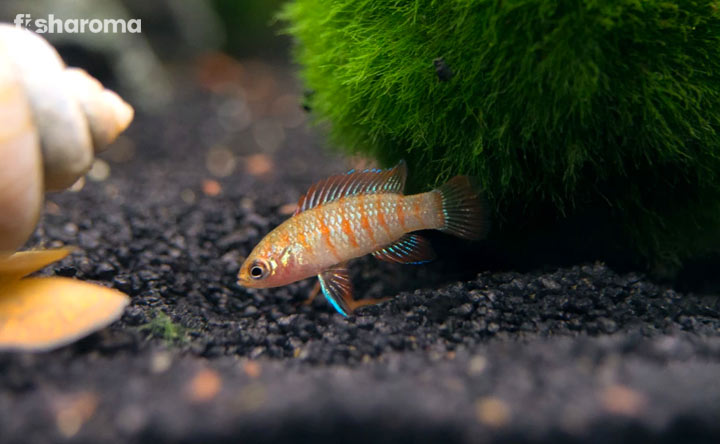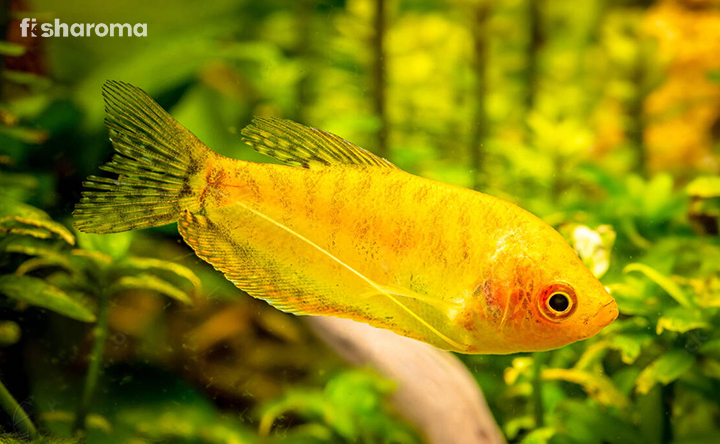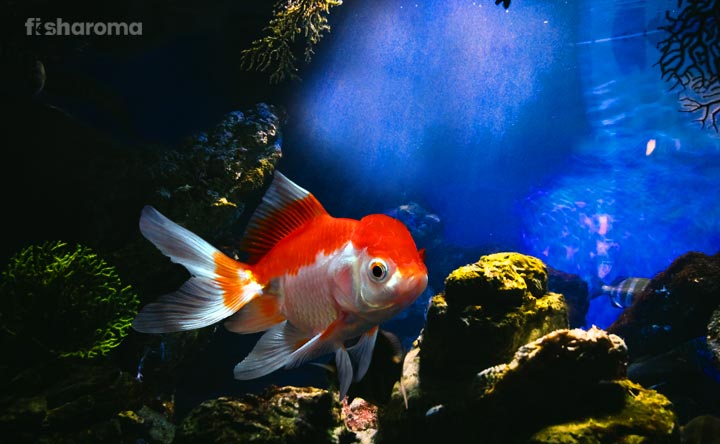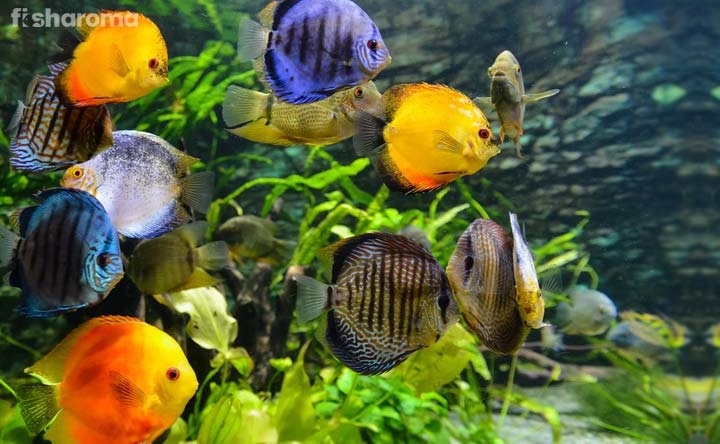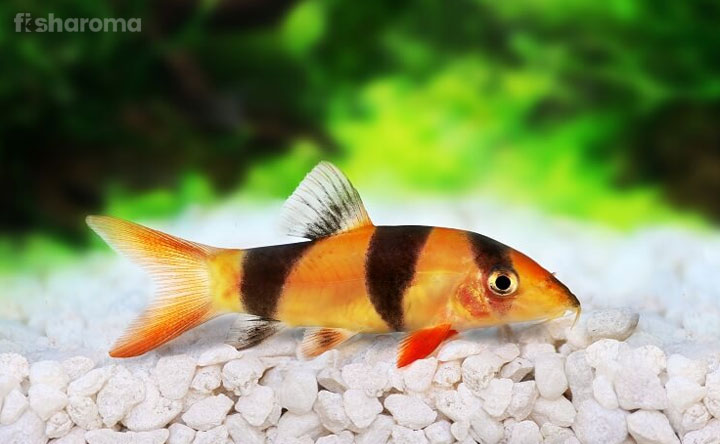Celestial Pearl Danio – Complete Care Guide for Your Shimmering Pet Fish
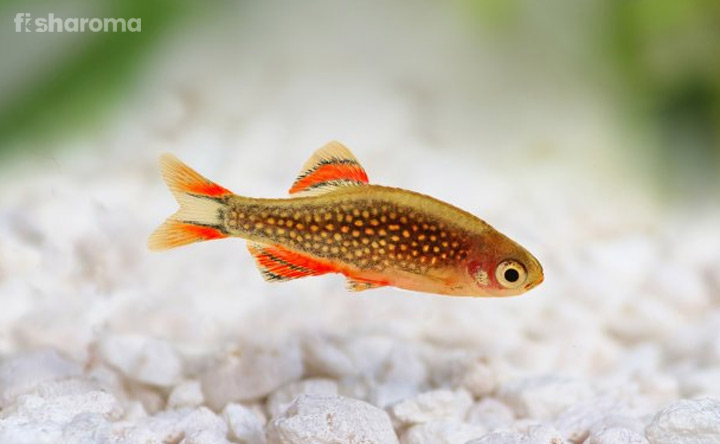
- Origin of Celestial Pearl Danio
- Appearance of Celestial Pearl Danio
- Temperament of Celestial Pearl Danio
- Suitable Tankmates for Celestial Pearl Danio
- Diet Plan for Celestial Pearl Danio
- Tank Requirements for Celestial Pearl Danio
- Water Type for Celestial Pearl Danio
- Breeding Process of Celestial Pearl Danio
- Diseases of Celestial Pearl Danio with Interventions
- Difficulties in Keeping Celestial Pearl Danio
Usually, you will find the pearl-patterned Celestial Pearl Danio in fresh vegetated ponds, lakes, and rivers. This tropical beauty of Southeast Asia boasts various colors with white pearl pattern on its body, which makes the fish attractive.
There are various fish in the Danio family, but this Danio has an appealing charm for its stunning shades, patterns, size, and generous nature which are admired by both beginners and experienced aquarists.
Quick Details on Celestial Pearl Danio
We have made a complete care guide for fish enthusiasts. Before knowing about that, we have given you a small detail about this freshwater fish.
| Scientific Name | Danio margaritatus/ Celestichthys margaritatus |
| Origin | Southeast Asia |
| Life-Span | 3-5 years |
| Colors | Silver, Gold, Red Orange with White Pearl Pattern |
| Temperament | Peaceful |
| Size | Up to 1” (2.5 cm) |
| Diet | Omnivore |
| Family | Cyprinidae |
| Compatibility | With Other Peaceful Species |
| Tank Size | 10 gallons |
| Care Level | Easy-Moderate |
Overview
Another name of Celestial Pearl Danio is ‘Galaxy Rasbora’ because of the sky-blue color and star-like pattern of the male Danio fish. The sharp eyes of this freshwater fish help it find out its food in the dark also. Due to the shy nature and small size of this breed, it should be kept in a community tank with a shoal of Danios or other schooling fish, so that it feels comfortable. The price of this fish is about $14.95.
Origin of Celestial Pearl Danio
Celestial Pearl Danio was first found in South East Asia (Myanmar) by the famous scientist of the Smithsonian Tropical Research Institute, Tyson R. Roberts. Usually, this fish is found in the Nam Lang, Nam Pawn and Salween River tributaries of Myanmar. It is also found in the thickly planted shallow lakes and ponds.
Celestial Pearl Danio was first found in a lake of Hopong village of Northern Myanmar. Now, it is found in Singapore and Great Britain also.
Appearance of Celestial Pearl Danio
The shimmering white-spotted body of this 1” (2.5 cm) fish is combined with red, blue and orange colors. The fins of this fish are small and shaded with red or orange color with black parallel lines.
These fish have sexual dimorphism; the females and males look different from each other. The male fish are more vibrant and thinner than females. Moreover, the females are round in shape, whereas the males are cylindrical shaped.
The male fish are deep sky-blue shaded with a series of pearlescent spots on its body. They also have a bright-red shaded belly. The females are not as bright as the males. They are golden-blue colored with pearly dots on their entire body. The ventral fins of the females are transparent in color. They have a golden or orange-colored belly. You will also find a dark black spot on the anal fin of the fish when they are ready to spawn.
Temperament of Celestial Pearl Danio
Celestial Pearl Danio is a peaceful breed that can easily get adjustable with other peaceful and same-sized fish. Moreover, it never gets aggressive with other species. If you keep more males than females in the fish tank, then there is a chance of fighting because males chase the females for mating, so it is important to maintain the ratio while setting their tank.
Suitable Tankmates for Celestial Pearl Danio
This fish likes living with the breeds of the same size and same temperament. So, avoid keeping aggressive and larger breeds with this fish. There are a few tankmates which can be great for this fish such as:
- Guppies
- Tetras
- Corydoras
- Mollies
Unsuitable Tankmates
If you keep large predator fish with Celestial Pearl Danio, then those breeds can harm or eat up this fish. Moreover, don’t keep small shrimps with this fish; otherwise, it can eat up the shrimps. There are some unsuitable tankmates of this fish such as:
- Oscars
- Cichlids
- Jack Dempsey
- Sharks
Compatibility of Celestial Pearl Danio
Celestial Pearl Danio likes to swim with a school of Danios; so you can keep 5-6 fish with it. However, maintain the male and female ratio when you are keeping this fish together. Try to keep two females with one male and two males with 3-4 females; otherwise, the males will start fighting with each other for mating with the female fish which can be dangerous for the female fish also.
Diet Plan for Celestial Pearl Danio
This fish eats plants, algae, zooplankton, worms, and insects in the wild, as it is an omnivore fish. You need to choose small invertebrates, leaves juice, and vegetable crumbs for this Danio fish. The best foods that you can feed them are:
- Juvenile Bloodworms
- Small Shrimps
- White Worms
- Krill
- Live Daphnia
- Grindal Worms
- Moina
- Vegetable Crumbs
- Algae
- Edible Leaves (Beware of Poisonous Leaves)
Don’t feed the same types of foods to this fish which may lead to malnutrition. Feeding them twice a day is suggested by the expert aquarists because that will balance their diet.
You can also feed them pellets, frozen foods, flakes and dry foods like:
- API Fish Food Pellets
- Zoo Med Spirulina
- Fluval Bug Bites
- HIKARI Micro Pellets
Tank Requirements for Celestial Pearl Danio
Generally, Celestial Pearl Danio is found in the vegetated shallow ponds, lakes, small streams and rivers near Myanmar. You should keep rocks, driftwood, and green freshwater plants in the aquarium to give a natural environment to the fish. Moreover, understand the tank size and other requirements when you are planning to keep this fish in your aquarium.
Tank Size
You need to purchase a 10-gallon aquarium for this fish because usually 5-6 fish are kept in a tank, as Danios don’t like living alone.
Ornament
If you want to bring a natural environment, then adorn the tank with live plants, driftwoods, and rock substrate. Caves are also needed to be kept in the tank because the caves are required so that the shy fish can hide inside the cave or take rest. Driftwoods are required for the tank because algae are grown on the body of driftwood and Danios like consuming algae. Plants are necessary for its tank because sometimes this fish lay its eggs on the leaf of the plants.
Lighting
Bright light is required for the tank of Celestial Pearl Danio because the aquarium of this fish needs to be planted and the plants need light energy to grow properly.
Filter
A slow sponge filter with a micro-power head is necessary for flushing out the wastes from the tank and for water circulation.
Water Type for Celestial Pearl Danio
Water is the prime thing that you need to focus on while setting the tank of the fish. Therefore, check the temperature, pH level, and hardness of the water before keeping this fish in the tank.
Temperature
The water temperature in the tank of this fish should be 73-79 °F (22.77-26.11 °C).
pH Level
The pH level of the water should be 6.5-7.5.
Hardness
Try to keep the water hardness soft to medium.
Cleaning Method
Buy a soft brush, liquid soap, and a cotton cloth to clean the fish tank. Scrub the walls and objects of the tank with the brush by using liquid soap on it. Once the tank is washed, wipe it with a soft cotton cloth or rug.
Replacement Process
Try to change 10-15% of water once in a week and if you are replacing the water once in a month then 25% of water is needed to be replaced after checking the temperature, pH level, and hardness. The water parameter for the tank of Celestial Pearl Danio has to be maintained; otherwise this fish may feel uncomfortable.
Breeding process of Celestial Pearl Danio
If you see a dark-shaded female fish with the round abdomen, then you have to understand that the fish is ready to spawn. Usually, this fish lay eggs in slow-moving water or the leaves of the plants.
The eggs incubate for 2-4 days, and after that process, the fries will enter a larval stage and start swimming. It is suggested to keep the eggs in a separate breeding tank because that will protect it from the predators that eat eggs. The breeding tank should also have plenty of vegetation to give it a natural feel.
Although the reproduction process of this fish is swift, it needs a low to medium water movement for laying eggs. You can feed micro foods, baby brine shrimps, and juvenile worms to the fries until they become adults. Within six months to one year, the fish becomes adult.
This fish can lay up to 30 eggs at a time.
Diseases of Celestial Pearl Danio with Interventions
Poor water condition and unbalanced water parameters can be the reasons for several diseases and infection. Also, the aggressive tankmates and fin nippers in the tank of Danios can harm them by biting and nipping their fins. There are some common diseases of this fish, such as:
- Fin Rot (Caused by poor water condition)
- Discoloration (Caused by stress and poor water condition)
- Ich (Bacterial Infection which is caused due to water pollution)
- Swim Bladder Infection (Overfeeding)
You can take the suggestion of veterinary doctors to find out the medicines for the diseases. You can also use antibacterial medicines like Tetracycline, Oxytetracycline, and Chloramphenicol in the water of the tank to keep the fish away from bacterial and fungal infections.
Do not forget to check the temperature and pH level of the water because unbalanced water parameter can lead to Fin Rot and other stress-related diseases in Danios. Also, find out appropriate tankmates for this fish, so that it does not feel uncomfortable. Feed the right amount of food to the fish twice a day because overfeeding may be the reason for various life-threatening diseases like bloating and swim bladder infection.
Difficulties in Keeping Celestial Pearl Danio
Although Celestial Pearl Danio is a peaceful and small fish, it is not very easy to breed this fish because of its sensitive nature. It needs a stable tank condition where the water condition has to be maintained. So, beginner fishkeepers should take suggestion from experienced aquarists when they are planning to keep this fish in their tank.
Interesting Facts about Celestial Pearl Danio
- The scientific name of the fish has deep meaning. The word ‘Celestichthys’ is a Greek word which means ‘heavenly fish’ and the word ‘margaritatus’ means ‘ornamented with pearl’. Hence, the name of the fish is doing justice to its features.
- The largest egg size of this Danio fish is 1.0-1.3”.
- Aquarists Paul Dixon and Pete Liptrot of the Bolton Museum of U.K. were the first aquarists who were successful in breeding this fish.
More Small and Peaceful Fish for Aquarium
Like Celestial Pearl Danio, there are other fish breeds which are small in size and like to live in a shoal of fish. If you want to know about their care guides, then take a look at the following articles:
- Zebra Danio: Perfect for both novice and expert aquarists, this 2” (6 cm) fish is also small and it is a peaceful breed. It likes to live with a shoal of Danios. Know about its care guide for petting the fish.
- Neon Tetra: Neon Tetra is known as the dazzling jewel of freshwater because of its shimmering and colorful body like Celestial Pearl Danio. This fish is also a small 1.5” (4cm) fish and it is peaceful by nature. Go through its care guide to get a better grasp over its lifestyle.
- Guppy Fish: This flowery-finned beautiful fish is of 0.6-2.4” (1.5-6.9 cm) and perfect for a community tank. Aquarists admire its peaceful nature and love watching it with a school of fish. If you also like watching a school of Guppies, then know its care guide.

